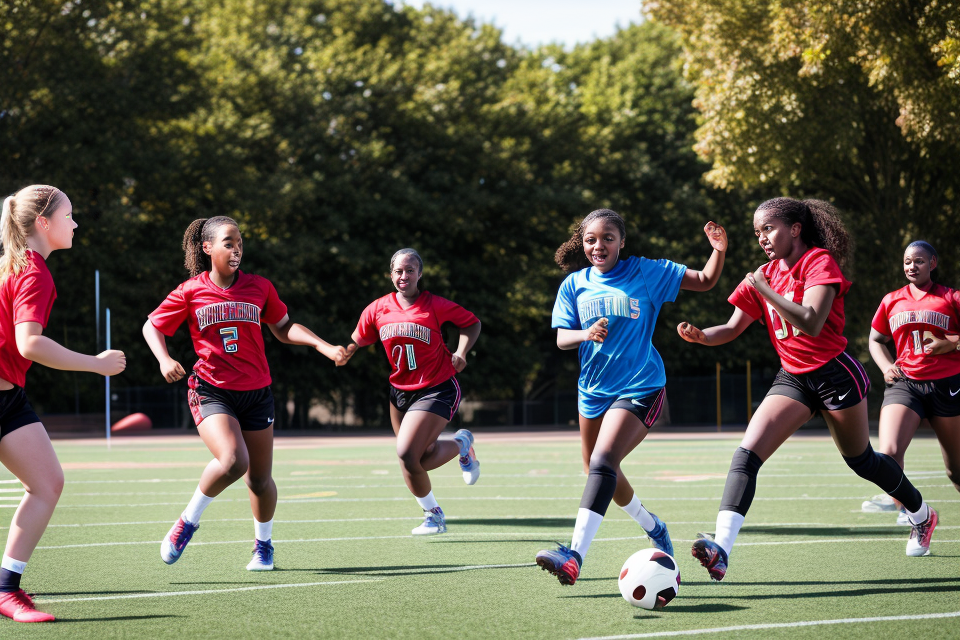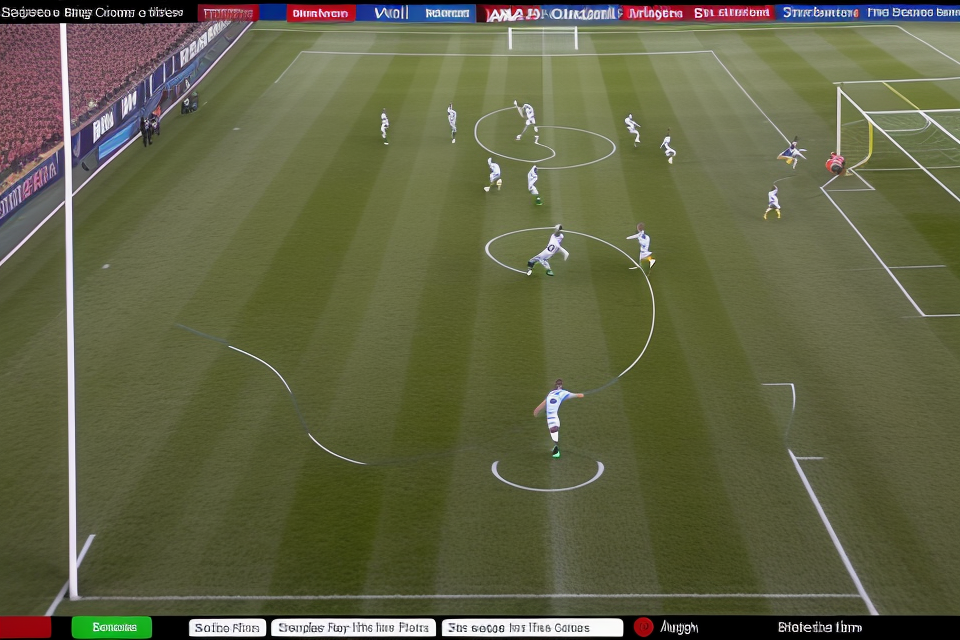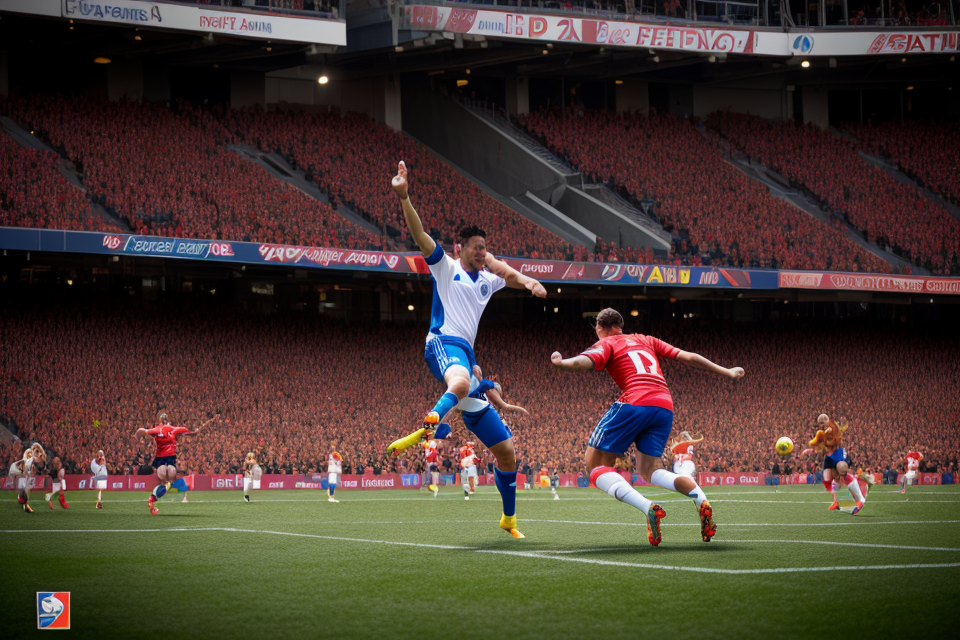When it comes to academic success, many students focus solely on their studies, neglecting the benefits that extracurricular activities, such as sports, can bring. However, research has shown that playing sports can have a positive impact on a student’s academic performance. From building teamwork skills to improving physical health, participating in sports can provide numerous advantages that translate into better grades and a more well-rounded education. In this article, we will explore the academic benefits of playing sports and how extracurricular activities can help students excel in the classroom. So, lace up your sneakers and get ready to learn how sports can be the key to unlocking academic success.
The Connection Between Sports and Academic Success
How Playing Sports Can Boost Academic Performance
- Developing Time Management Skills
Participating in sports requires players to balance their time between practices, games, and studying. This helps athletes learn how to prioritize tasks and manage their time effectively, skills that can be applied to academic pursuits as well. By juggling the demands of sports and academics, student-athletes develop strong time management skills that serve them well in both areas of their lives.
- Building Teamwork and Collaboration Skills
Playing sports involves working closely with teammates towards a common goal. This collaborative experience teaches athletes how to communicate effectively, listen to others, and contribute to a shared effort. These teamwork and collaboration skills are highly valued in the classroom and the workplace, where students must often work with others to complete projects and solve problems.
- Enhancing Physical Health and Mental Well-being
Physical activity is essential for maintaining good health, and sports provide a great way for students to stay active and healthy. Regular exercise has been shown to improve mental well-being, reduce stress, and enhance cognitive function. When students are physically fit and mentally healthy, they are better equipped to handle the demands of school and perform at their best academically.
- Fostering a Positive Attitude Towards Learning
Playing sports can also instill a positive attitude towards learning and academics. When students are engaged in sports, they learn to set goals, work hard, and persevere through challenges. These same qualities are necessary for academic success, and the positive experiences students have in sports can help them approach their academic pursuits with confidence and enthusiasm.
Debunking the Myth of the “Jock” vs. “Nerd” Stereotype
The stereotype that athletes are not as intelligent as their non-athlete counterparts has been around for decades. This belief has led to a division between athletes and academics, with many people thinking that one must come at the expense of the other. However, this stereotype is far from the truth.
The importance of balancing athletics and academics cannot be overstated. Many successful athletes have also been academic achievers. In fact, research has shown that students who participate in sports tend to have higher GPAs than those who do not. This is because sports teach valuable skills such as time management, discipline, and teamwork, which are essential for academic success.
Furthermore, being well-rounded is crucial for success in any aspect of life. Participating in sports allows students to develop skills and interests outside of academics, which can help them become more well-rounded individuals. For example, playing a sport can help a student develop leadership skills, confidence, and the ability to work with others towards a common goal. These skills can be just as valuable as academic achievements and can help students succeed in their future careers.
In conclusion, the “jock” vs. “nerd” stereotype is a myth that needs to be debunked. Participating in sports does not hinder academic success, but rather can enhance it. By participating in sports, students can develop valuable skills that will help them succeed in all aspects of life.
Maximizing the Academic Benefits of Playing Sports
Choosing the Right Sport for Your Child
Choosing the right sport for your child is a crucial decision that can greatly impact their academic performance. While it may seem like an obvious choice to select a sport that your child enjoys, there are several other factors to consider when making this decision.
- Considering Your Child’s Interests and Strengths: The first step in choosing the right sport for your child is to consider their interests and strengths. Children are more likely to stay committed to a sport if they enjoy it and feel confident in their abilities. Encourage your child to try out different sports and activities until they find one that they are passionate about.
- Exploring a Wide Range of Sports and Activities: It’s important to expose your child to a wide range of sports and activities to help them discover their interests and strengths. Encourage them to try out new things and don’t be afraid to try out multiple sports at once. This will give your child the opportunity to find the sport that best suits their skills and interests.
- Evaluating the Level of Commitment Required: Different sports require different levels of commitment, both in terms of time and energy. Consider the amount of time and energy your child has available to devote to a sport, as well as the level of commitment required by the sport. For example, a sport that requires frequent travel or long practices may not be a good fit for a child who has other commitments, such as schoolwork or extracurricular activities.
By taking these factors into consideration, you can help your child choose a sport that will not only be enjoyable, but also provide them with the academic benefits of playing sports.
Developing a Healthy Sports-Academics Balance
Achieving a healthy balance between sports and academics is essential for students who wish to maximize the academic benefits of playing sports. Here are some tips to help develop this balance:
- Setting Realistic Goals and Expectations: Athletes must set realistic goals and expectations for their academic performance. This includes setting specific, measurable, achievable, relevant, and time-bound (SMART) goals. Athletes should also understand that it is normal to experience ups and downs in academic performance and that it is important to remain focused on long-term goals.
- Prioritizing Academic Responsibilities: Athletes must prioritize their academic responsibilities and understand that their primary purpose for participating in sports is to improve their academic performance. This means attending all classes, completing assignments on time, and seeking help when needed. Athletes should also communicate with coaches and teachers to ensure that their sports commitments do not interfere with their academic responsibilities.
- Seeking Support from Coaches, Teachers, and Parents: Athletes should seek support from coaches, teachers, and parents to help maintain a healthy sports-academics balance. Coaches can provide guidance on time management and stress reduction techniques, while teachers can offer academic support and resources. Parents can also play a crucial role by providing encouragement, support, and transportation to and from practices and games.
By following these tips, athletes can develop a healthy sports-academics balance and maximize the academic benefits of playing sports.
Creating Opportunities for Integration
One way to maximize the academic benefits of playing sports is by creating opportunities for integration. This means incorporating the values and skills learned through sports into the classroom setting and using sports as a tool to teach academic concepts. Additionally, cross-curricular activities and projects can be created to connect the learning from different subjects and provide a more holistic educational experience.
Incorporating Sportsmanship Values into the Classroom
Incorporating sportsmanship values into the classroom can help students develop important life skills such as respect, responsibility, and self-discipline. Teachers can encourage students to apply these values in their daily interactions and academic work. For example, teachers can assign group projects that require students to work together and practice good communication and conflict resolution skills. This can help students learn how to work effectively with others and build positive relationships.
Using Sports as a Teaching Tool for Academic Concepts
Using sports as a teaching tool for academic concepts can help students engage with the material in a more meaningful way. For example, a math teacher might use a basketball game to teach concepts such as fractions, averages, and ratios. By relating the math concepts to a real-world situation, students may find the material more relevant and interesting. Additionally, teachers can use sports as a way to teach critical thinking and problem-solving skills. For example, a coach might use a game of soccer to teach players how to strategize and make effective decisions on the field.
Creating Cross-Curricular Activities and Projects
Creating cross-curricular activities and projects can help students make connections between different subjects and see how the material they are learning can be applied in real-world situations. For example, a social studies teacher might create a project that requires students to research the history of a particular sport and its impact on society. This project could involve reading, writing, and research skills, as well as an understanding of social and cultural issues. By connecting the material from different subjects, students can develop a more comprehensive understanding of the topic and see how the skills they are learning can be applied in different contexts.
Overcoming Challenges and Misconceptions
Addressing Common Misconceptions About Sports and Academics
The Myth of “Either/Or” Choices
One of the most common misconceptions about sports and academics is that they are mutually exclusive, with the belief that a student must choose one over the other. This notion could not be further from the truth. In fact, many studies have shown that students who participate in sports tend to perform better academically than those who do not. This is likely due to the discipline, time management, and teamwork skills that are developed through sports participation.
The Benefits of Participating in Team Sports
Another misconception about sports and academics is that team sports take away from a student’s academic performance. However, research has shown that participating in team sports can actually have a positive impact on academic performance. This is because team sports require communication, collaboration, and problem-solving skills, which can help students excel in the classroom. Additionally, the structure and discipline of team sports can help students develop healthy habits and routines that can contribute to academic success.
The Myth of “Too Much” Extracurricular Activity
There is also a misconception that participating in too many extracurricular activities, including sports, can negatively impact a student’s academic performance. However, this is not necessarily true. While it is important for students to manage their time effectively, participating in a variety of extracurricular activities can actually help students develop important skills such as organization, prioritization, and time management. As long as students are able to balance their extracurricular activities with their academic responsibilities, there is no reason why they cannot excel in both areas.
Navigating Potential Challenges
Playing sports as an extracurricular activity can be beneficial for students in many ways, but it can also come with its own set of challenges. In this section, we will discuss some of the potential challenges that students may face when participating in sports and how they can navigate them.
- Managing Time Commitments and Scheduling Conflicts
One of the biggest challenges that students face when participating in sports is managing their time commitments and scheduling conflicts. Between school, homework, and practice, students may find themselves struggling to keep up with everything. To overcome this challenge, it is important for students to prioritize their responsibilities and make a schedule that works for them. This may mean rearranging their schedule to make time for sports or seeking help from teachers or coaches to ensure that they are staying on top of their schoolwork. - Dealing with Injuries and Setbacks
Another challenge that students may face when participating in sports is dealing with injuries and setbacks. Sports can be physically demanding, and injuries can happen at any time. To overcome this challenge, it is important for students to listen to their bodies and take the necessary precautions to prevent injuries. This may mean warming up properly before practice or taking a break when they are feeling tired or sore. If an injury does occur, it is important for students to seek medical attention and work with their coaches and trainers to develop a plan for recovery. - Coping with Pressure and Expectations
Finally, students may face pressure and expectations from coaches, teammates, and themselves to perform well in sports. This can be overwhelming and can lead to anxiety and stress. To overcome this challenge, it is important for students to focus on their own performance and progress rather than comparing themselves to others. It is also important for students to communicate with their coaches and teammates about their feelings and to seek support from trusted adults or resources. By learning how to cope with pressure and expectations, students can continue to enjoy the benefits of playing sports while also maintaining their academic performance.
Promoting a Positive Attitude towards Sports and Learning
Emphasizing the Value of Both Athletics and Academics
One of the most significant challenges in promoting a positive attitude towards sports and learning is overcoming the perception that these two domains are mutually exclusive. It is crucial to emphasize that both athletics and academics are valuable and can coexist harmoniously. By highlighting the success stories of athletes who have excelled academically, it is possible to change the narrative and inspire students to pursue their passions without compromising their academic performance.
Encouraging a Growth Mindset and Resilience
Another essential aspect of promoting a positive attitude towards sports and learning is encouraging a growth mindset and resilience. It is essential to help students understand that setbacks and failures are an integral part of the learning process and that perseverance and determination are critical factors in achieving success. By fostering a culture of resilience and encouraging students to embrace challenges, it is possible to instill a positive attitude towards sports and learning.
Celebrating Successes and Progress
Celebrating successes and progress is a vital component of promoting a positive attitude towards sports and learning. By acknowledging and rewarding the efforts and achievements of students, it is possible to create a positive feedback loop that encourages continued growth and development. Celebrating successes and progress can take many forms, including recognizing academic achievements, honoring teamwork and sportsmanship, and acknowledging individual and collective growth.
Overall, promoting a positive attitude towards sports and learning requires a multi-faceted approach that emphasizes the value of both athletics and academics, encourages a growth mindset and resilience, and celebrates successes and progress. By implementing these strategies, it is possible to create an environment that fosters the development of well-rounded individuals who are equipped to excel in all aspects of their lives.
FAQs
1. What are the academic benefits of playing sports?
Playing sports has been shown to have a positive impact on academic performance. Being part of a sports team requires commitment, discipline, and time management skills, all of which can help students stay focused and motivated in their academic pursuits. Additionally, sports can help students develop important life skills such as teamwork, leadership, and problem-solving, which can be beneficial in both their academic and personal lives.
2. How can sports improve grades?
Participating in sports can help improve grades by teaching students important life skills such as time management, organization, and prioritization. In addition, sports require a high level of commitment and focus, which can help students stay motivated and engaged in their academic work. Playing sports can also help students develop healthy habits, such as regular exercise and proper nutrition, which can have a positive impact on overall well-being and academic performance.
3. What sports are best for improving academic performance?
Any sport can offer academic benefits, but the specific sport a student chooses to play may depend on their individual interests and strengths. Team sports such as soccer, basketball, and lacrosse can help develop teamwork and leadership skills, while individual sports such as tennis and golf can help build focus and discipline. It’s important to find a sport that a student enjoys and is committed to, as this will help them stay motivated and engaged in both their academic and athletic pursuits.
4. How much time should a student dedicate to sports and academics?
The amount of time a student should dedicate to sports and academics will vary depending on their individual circumstances and goals. However, it’s important to strike a balance between the two. Playing sports can help students develop important life skills such as time management and organization, which can be beneficial in both their academic and personal lives. Additionally, it’s important for students to communicate with their teachers and coaches to ensure that they are keeping up with their academic responsibilities while also being committed to their sports teams.
5. Is it better to focus on academics or sports?
It’s important to find a balance between academics and sports. While academics should always be a top priority, participating in sports can offer many benefits that can help students succeed in their academic pursuits. Sports can help students develop important life skills such as teamwork, leadership, and problem-solving, which can be beneficial in both their academic and personal lives. Additionally, sports can help students stay motivated and engaged, which can be especially helpful for students who struggle with staying focused on their academic work.










